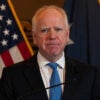Free cell phones for low-income Americans, one of the fastest growing welfare programs in the United States, is—by the Federal Communications Commission’s (FCC) own admission—rife with “waste, fraud and abuse.” And who is paying for these free Obamaphones? If you have a phone subscription, you are.
The program, officially called Lifeline, predates Obama’s presidency but has earned the colloquial name “Obamaphone” after nearly tripling in cost since 2008.
Almost everyone who pays a phone bill has an extra monthly charge that contributes to the Universal Service Fund, which covers Lifeline access. The government pays companies $9.25 for every person connected through Lifeline. Recipients typically receive a free wireless phone and a certain amount of airtime.
These Obamaphones aren’t iPhones, but they typically have nearly all the capabilities offered through a standard phone contract.
SafeLink, for example, offers government-sponsored plans that not only include basics like local, long distance, and emergency calls, but other amenities such as international calls, 1,000 texts, carry-over minutes, call waiting, roaming, and a choice of 67, 125, or 250 minutes—all at no cost and contract-free. If 250 monthly minutes are not enough to call potential employers, no problem! Referring a friend for a free cell phone will score an additional 100 minutes.
A comparable paid plan available at SafeLink’s parent company, TracFone Wireless, would cost almost $400 annually per phone.
By law, Lifeline is restricted to one phone per household and only available to those who have an income below 135 percent of the federal poverty line or enrolled in a means-tested entitlement program. In practice, it is simple to obtain multiple Obamaphones: The FCC announced that duplicate Lifeline subscriptions topped 2 million, warranting millions in fines to companies for failing to verify recipients’ income.
Jillian Melchoir of the Franklin Center wanted to find out just how easy it would be. She managed to collect three of her very own Obamaphones, even though her income disqualifies her from any government support.
Melchoir is in the company of millions: According to figures supplied by the FCC to The Wall Street Journal, 41 percent of subscribers were unable to prove their eligibility for the program.
Indifference to abuse of the program is appalling. In an undercover investigation by conservative activist James O’Keefe, prospective recipients openly discussed selling their phones for handbags and heroin—only to be reassured by the Obamaphone vendors they would not be judged.
Lifeline has mutated from a program designed to help the needy into a glorified corporate subsidy. Abuse of the program will continue while the FCC scrambles to fix it.
An all-expense-paid cell phone, courtesy of those who actually pay for their own service, is not a human right; it’s an insult to struggling families who are reminded every month that their money is lost in yet another sloppy government slush fund.
Matthew Sabas is currently a member of the Young Leaders Program at The Heritage Foundation. For more information on interning at Heritage, please click here.
































